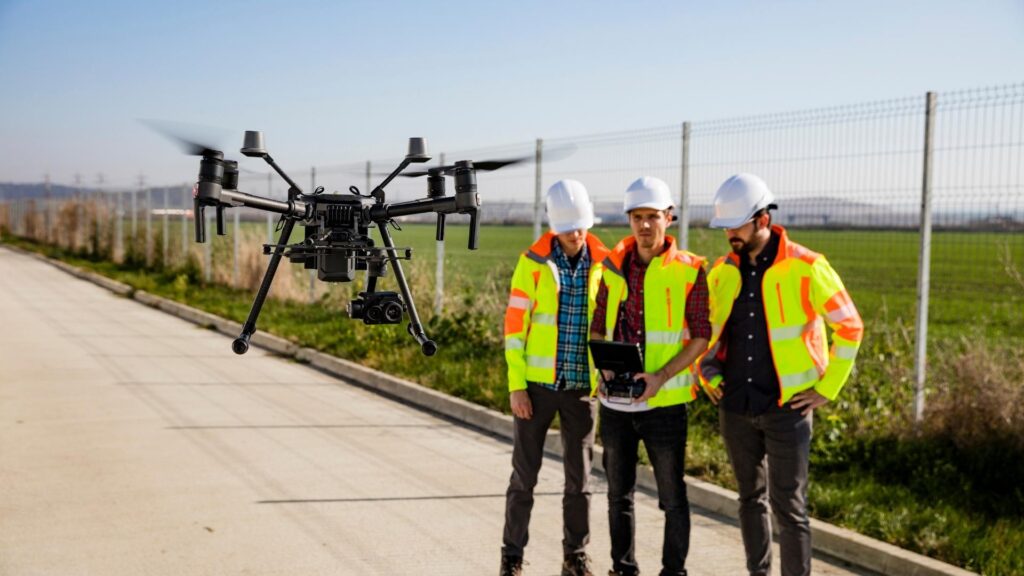

It is no secret that the presence of drones in our daily lives has raised many questions, ranging from “are they safe?” to “am I going to be replaced by a drone?”. Human nature tends to react irrationally when feeling threatened, which fuels the rejection of innovation. However, this scrutiny allows technology companies to realise that a smooth, user-friendly and properly advertised incorporation is the best way to access the market. Given this fact, one main question emerges regarding the challenges that the future of aviation will face: how can manned and unmanned vehicles live in harmony?
The concept of drones and piloted aircraft coexisting encompasses multiple scenarios, all of them requiring regulation. The infamous incident that occurred at Gatwick in 2018 sparked legislative interest regarding whether drones should be considered not as toys, but as devices with great potential (both beneficial and malicious), requiring proper regulation to prevent future flights from disruption. This encounter of drone vs plane on a runway was undoubtfully the breaking point for further scrutiny on drones, and they keep happening, unfortunately. Only recently, there was a case in Leicestershire which originated at the famous Download Festival, but more importantly, this example opened the door to the question of whether drones can realistically share any airspace safely. We certainly have the potential to secure this, but only if we open the right doors by unlocking key emerging markets.
Global regulations regarding UAVs are still in early stages, with most international guidelines still viewing them as threats in response to the unfavourable image generated by malicious drones in the past: “The public are reminded that flying a drone in proximity to an operational airport is an offence under the Civil Aviation Act 1982 and is a huge risk to public safety. The police will take appropriate action if necessary.” Nevertheless, there is a clear trend from both the industry and involved parties regarding detection systems for UAVs that aims to create “aerial roads”, rather than to classify them as vermin. Although there are still ongoing and ever-evolving projects to mitigate unwanted drones, there is now a considerable evolution in detection systems (radars, sensors) to detect, identify and classify UAVs. This represents a natural step toward allowing the smooth incorporation of drone technology in response to the growing use of drones in logistics and plans to fully integrate them into supply chains.
Essential institutions such as Royal Mail, local city councils and the National Health Service (NHS) are all eyeing the opportunity to give drones a try. This could facilitate the creation of safe airspace for both manned and unmanned aircraft, as these crucial institutions could greatly benefit from rapid and appropriate legislation. For example, Royal Mail is planning to use drones to aid deliveries in remote communities. Such initiatives are, of course, subject to the approval of the Civil Aviation Authority (CAA), which is evaluating routes and compatibility issues concerning the shared use of airfields by UAVs and aeroplanes. This has led to swift agreements between the authorities and the parties involved to ensure that these “aerial roads” can be secured using smart detection and classification systems.
Furthermore, Scottish schools are looking at investing in drones to deliver school meals in communities in West Glasgow. The involvement of local councils means there is not much to modify legally for these exchanges to occur other than written permission from the council itself. Finally, and perhaps most importantly, the NHS will conduct trials to deliver chemotherapy drugs from Portsmouth to the Isle of Wight. Given the support this could offer patients regardless of their location, this represents a critical project for integrating drones into logistics and has therefore been deemed a priority by aviation Authorities.
There are many arguments in favour of integrating UAVs into our daily lives. Chief among these is a reduction in carbon emissions, which are considerably lower compared to conventional aeroplanes. Moreover, unmanned aircraft are also more resistant to bad weather and can be controlled and monitored by remote pilots. While this has previously sparked fears regarding the job security of pilots, drones will also need piloting, monitoring and classifying, creating opportunities for former aircraft pilots. Regulators may also need to create a specialised department to address UAV enquiries, while forecasts show that even more jobs will be created once drones become a new gear within the logistics mechanism.
In conclusion, the day-to-day use of drones in our lives is clearly on the horizon. Consequently, regulations must be loosened to embrace the arrival of UAVs and unlock their full potential. This transition needs to be smooth and concise, changing the public image of drones by allowing detection systems to be allocated in their corresponding frequencies. Access Partnership works hard to ensure that companies involved in the drone industry can develop their technology, adhering to the guidelines of a foreseeable future so that logistics and supply chains can be modernised ahead of time.
